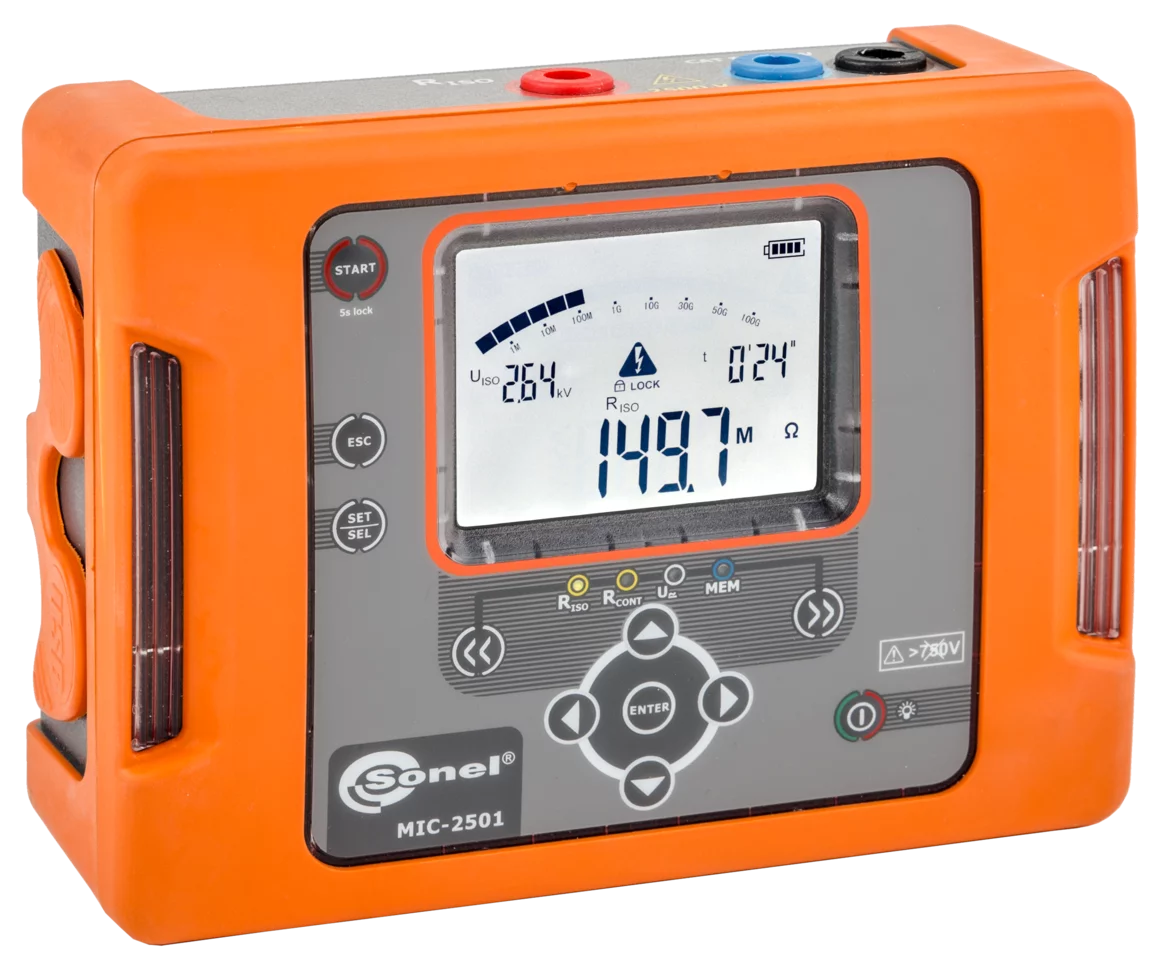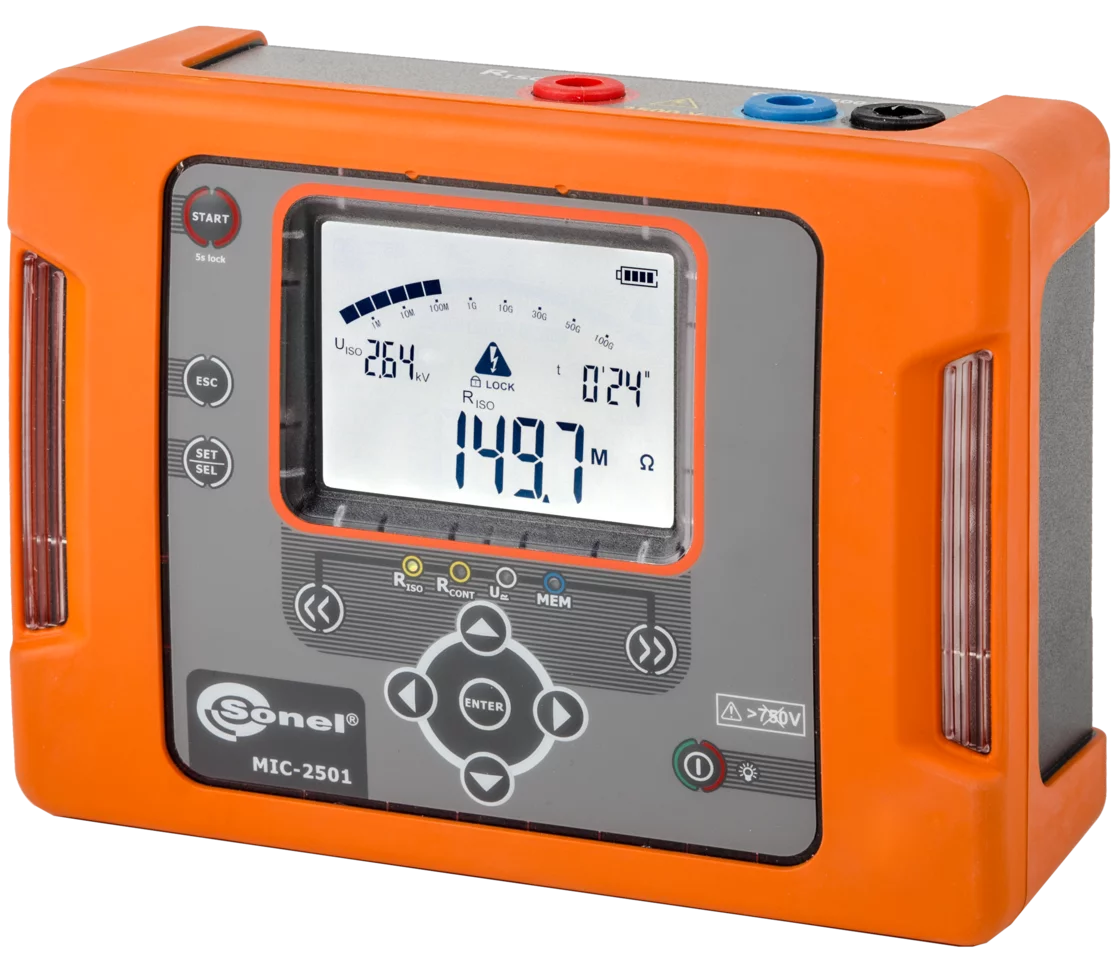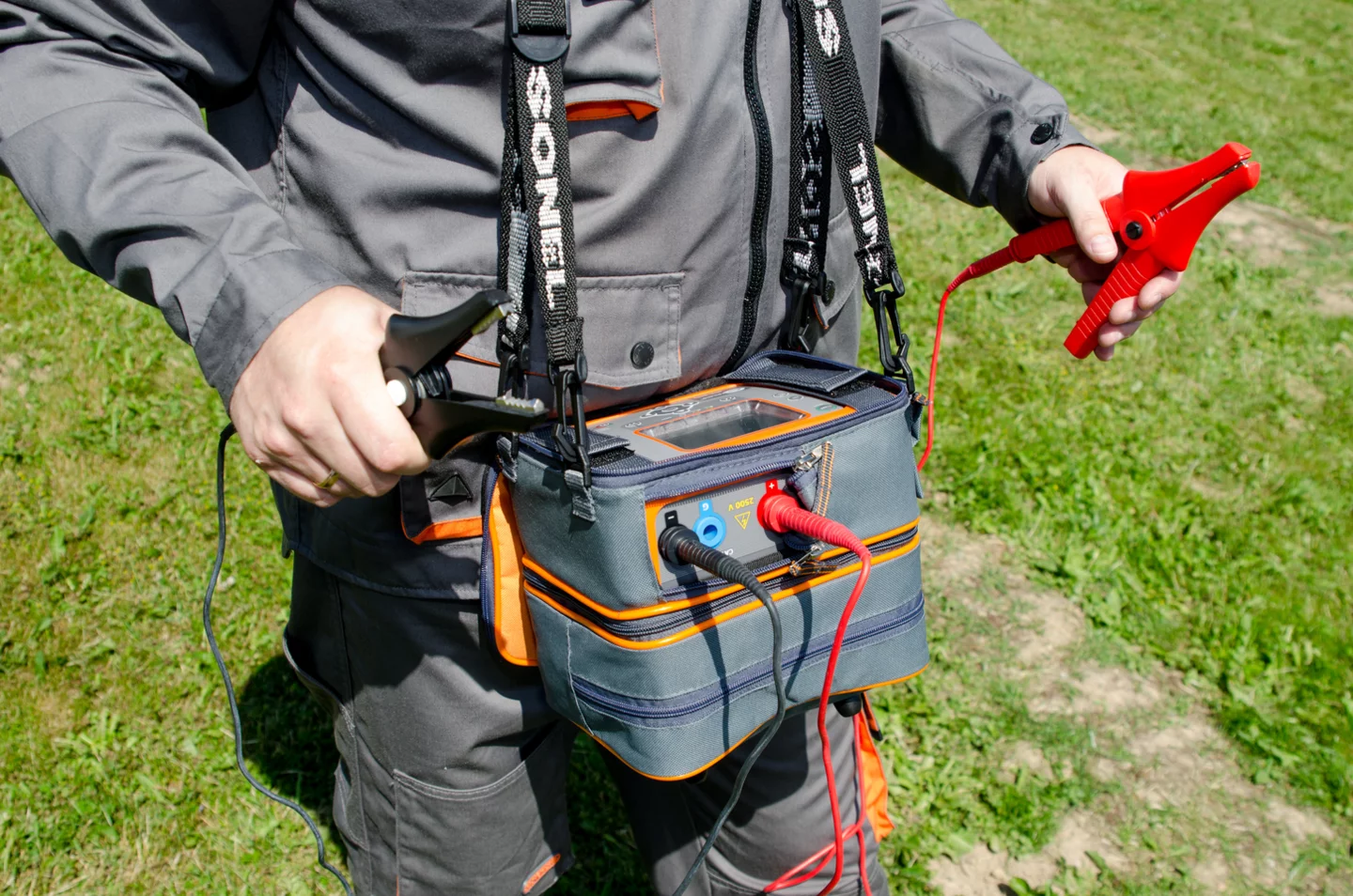Opis
Dane techniczne
Pliki do pobrania
Zmierz rezystancję izolacji miernikiem MIC-2501
Funkcjonalny miernik rezystancji izolacji Sonel MIC-2501 zaskakuje licznymi funkcjami ukrytymi w zgrabnej i poręcznej formie. Ze względu na swoje parametry, solidną obudowę o poziomie ochrony IP 65, niski pobór energii z akumulatorów oraz możliwość doładowania w trakcie wykonywania pomiarów, miernik jest niezawodnym narzędziem znajdującym zastosowanie w wielu obszarach. Doskonale sprawdza się w celu kontrolowania instalacji przemysłowych oraz sieci trakcyjnych, z powodzeniem jest stosowany również w budownictwie mieszkaniowym. Zalety tego urządzeniami doceniają zwłaszcza elektrycy pracujący w utrzymaniu ruchu, testujący silniki, kable oraz oświetlenie uliczne. Miernik Sonel MIC-2501 przydaje się także do pomiarów przy budowie oraz konserwacji instalacji fotowoltaicznych. Stanowi niezawodne rozwiązanie stworzone na potrzeby instalatorów sieci telekomunikacyjnych i operatorów sieci ciepłowniczych, ułatwiając kontrolowanie systemu alarmowego rur preizolowanych.
Cechy
- napięcie pomiarowe wybierane z zakresu 100...2500 V, wybierane skokowo co 100 V
- ciągłe wskazanie mierzonej rezystancji izolacji lub prądu upływu
- samoczynne rozładowanie pojemności mierzonego obiektu po zakończeniu pomiaru rezystancji izolacji
- akustyczne wyznaczanie pięciosekundowych odcinków czasu, ułatwiające zdjęcie charakterystyk czasowych
- odmierzane czasy pomiaru T1 , T2 i T3 dla pomiaru współczynników absorpcji (Ab/PI/DAR) dla 15, 60 i 600 s
- wskazania rzeczywistego napięcia pomiarowego podczas pomiaru
- zabezpieczenie przed pomiarem obiektów będących pod napięciem
Zastosowanie
Miernik rezystancji izolacji o szerokim zakresie zastosowań. Świetnie spisuje się zarówno w budownictwie mieszkaniowym, jak również przy sprawdzaniu instalacji przemysłowych czy sieci trakcyjnych. Z uwagi na swoje cechy – doskonałe parametry, niski pobór energii z akumulatorów i możliwość ich doładowania w trakcie trwania pomiarów, poręczność oraz wysoki stopień szczelności obudowy – chętnie wykorzystywany jest przez elektryków pracujących w utrzymaniu ruchu, testujących silniki, kable, oświetlenie uliczne czy przy budowie i konserwacji instalacji fotowoltaicznych. Doskonale wpisuje się w potrzeby instalatorów sieci telekomunikacyjnych oraz operatorów sieci ciepłowniczych, gdzie wymagane jest kontrolowanie systemu alarmowego rur preizolowanych.
Cechy wyróżniające
Miernik umożliwia zmierzenie rezystancji izolacji napięciem pomiarowym do 2500 V. W przypadku badań kabli samoczynnie rozładowuje ich pojemność z chwilą zakończenia pomiaru. MIC-2501 pozwoli użytkownikowi na zmierzenie ciągłości połączeń ochronnych i wyrównawczych prądem większym niż 200 mA, w obu kierunkach. Miernik posiada wbudowany woltomierz napięć stałych oraz zmiennych w zakresie do 750 V.
Obszerna pamięć przyrządu pozwala zapisać i przesłać do komputera blisko 12 tysięcy wyników pomiarów.
Możliwości urządzenia
Niewątpliwą zaletą urządzenia jest fakt dostatecznie długiej pracy na jednym ładowaniu akumulatorów. Elektrycy wykonujący badania na obiektach powtarzalnych i w krótkich odstępach czasu nie muszą się martwić, że miernik rozładuje się przed zakończeniem pracy. Ponadto w trakcie prac pomiarowych użytkownik może go doładowywać z zewnętrznego źródła zasilania, np. powerbanku 12 V/2 Ah.






